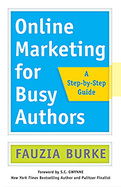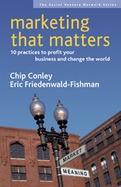BK Blog Post
10 Marketing Strategies of Our Bestselling Authors
 Posted by
Kristen Frantz,
COO and SVP of Sales & Marketing,
Berrett-Koehler Publishers Inc.
Posted by
Kristen Frantz,
COO and SVP of Sales & Marketing,
Berrett-Koehler Publishers Inc.
Kristen Frantz is Vice President of Sales and Marketing at Berrett-Koehler Publishers.
@font-face {font-family:"font";src:url("https://")}@media (touch-enabled),(-webkit-touch-enabled),(-moz-touch-enabled),(-o-touch-enabled),(-ms-touch-enabled),(modernizr){#touch{top:9px;position:absolute}}@media (transform-3d),(-webkit-transform-3d),(-moz-transform-3d),(-o-transform-3d),(-ms-transform-3d),(modernizr){#csstransforms3d{left:9px;position:absolute;height:3px;}}#generatedcontent:after{content:":)";visibility:hidden}This list was compiled from surveying our bestselling authors on what key strategies they think have led to their book sales success.
- Become an Authority on the Subject. To have a successful book, you must first build a following among your target audience. As he wrote in Eat That Frog!, Brian Tracy “started off life with few advantages, aside from a curious mind.” Through determination and learning from others, he has risen to become one of the world’s top motivational speakers on success. He has increased his authority in this area by continually promoting his ideas in his speeches, articles, and books.
- Build a Specific Platform. Richard Leider, author of The Power of Purpose, recommends “[building] a platform with a single, clear focus. In our case—purpose. [We became] known as ‘the Purpose Company’ and the ‘go-to voice’ for purpose-related content and services. Readers are not buying a book; they are buying a relationship! To broaden your appeal, narrow your distinction.”
- Write a Book That Travels across Cultures. BJ Gallagher’s book A Peacock in the Land of Penguins has been translated into twenty-one languages and has sold over 360,000 books worldwide. BJ comments, “My books sell much better overseas than they do in the US. If you want a successful book, write about a universal topic, not just an American topic.” Brian Tracy agrees: “The most important factor in producing a bestselling book is to select a subject that a large number of potential readers want and need to be informed on and then to write on that subject in an interesting and enjoyable style.”
- Integrate Your Book into Your Business. Beverly Kaye and Sharon Jordan-Evans, coauthors of Love ’Em or Lose ’Em, both had thriving businesses before they published Love ’Em. Once the book was out, they integrated it into their existing businesses by including it in their speeches, trainings, and workshops and creating other products to complement it. Bev comments, “I had a sales team that sold the book with our training program for managers. The training was rolled out globally to many organizations. The fact that we were able to train trainers, tailor programs to meet client needs, and also offer off-the-shelf training that could be implemented immediately gained us a great following.” Jim Ferrell of the Arbinger Institute, author of Leadership and Self-Deception, agrees with that approach: “The synergy between our books and our corporate business—each drives the success of the other. The fact that we are out there talking and teaching about these ideas all the time has been of incalculable benefit.”
- Focus on Grassroots Marketing. Establish relationships with key organizations that can help get the word out about your book. Grassroots marketing can come in the form of retaining new clients, writing for a newsletter, speaking at events, sponsoring events, mutually referring clients/customers to one another, linking websites, and so on. When we published Agenda for a New Economy by David Korten, David aggressively went to his network of organizations to get the word out, particularly through his connections with Yes! Magazine.
- Leverage Events and Immersion Experiences. When John Perkins wrote Confessions of an Economic Hitman, he took a risk to tell his story, and he was able to convey the passion in his book through his speaking and longer format media interviews. John comments, “I was on Democracy Now! shortly after publication, and the book went to #4 on Amazon that afternoon. I do lots of radio and speaking engagements. All that helps but only if the book strikes a chord with many readers and they spread the word.” Many other top authors attribute their success similarly. Meg Wheatley, author of Leadership and the New Science, cites “being out speaking for many, many years, many times a month,” and Sharon Jordan-Evans credits “speaking engagements—both with HR/training pros and with corporate conferences.” Peter Block, author of Stewardship, agrees and advises, “Do as much speaking as possible, as well as interviews (print, BlogTalkRadio, etc.).”
- Engage in Digital Marketing Techniques to Engage Your Audience. Ken Blanchard, coauthor of Great Leaders Grow, says, “Having friends, colleagues, and associates who pass along word about the book is a key contributor to success. These days, word is passed via social media—also very important.” Jim Ferrell of the Arbinger Institute backs this up: “We have been fairly successful building a tribe around our work. Part of this is social media, but the larger part is having a going concern that people can connect and engage with in a number of ways. We view our readers as part of the Arbinger family, and we try to find ways for them to engage with us.”
- Be Generous. Meg Wheatley reflects, “I learned early on not to hold on to my ideas but to work to get them circulating in as many places as possible. I stopped worrying about my ‘intellectual capital’ a long time ago, and I believe it’s paid off…I think my website has played a good role—I long ago began making my articles available for free, and I now have a very rich library of articles, short videos, interviews, etc. People have complimented me on my generosity and told me how they keep going back to the site when they need a lift.” Mark Miller, coauthor of Great Leaders Grow, agrees and advises, “Find a way to give away as many books as possible. Do free presentations too. Or ask your host to buy copies of your book in lieu of a speaker’s fee and give the attendees a free copy. Assuming it’s a good book, the more you give away, the more you’ll sell.” Ideally, every person in the room will leave your events with a copy of one of your books and, as a result, won’t forget about your ideas.
- Market Your Book to Specific Communities. One of the most successful ways that the Arbinger Institute started getting sales for Leadership and Self-Deception was to serialize it on a website aimed at a very targeted part of the Arbinger community. It was one of the early sparks that got the huge word-of-mouth machine going for the book. However, the content was key to its going viral. Jim Ferrell of the Arbinger Institute reflects, “You have to write to a passion—ideally to a passion that is distinct and different from what others have been writing about. Many people advise others to write what people are looking for. In sales terms, this means to sell people what they want. I have always approached it differently. I write about what people don’t know they are looking for—that is, I gravitate toward selling people what they don’t know they want. That might be a riskier way to go on the front end, but if you hit it right, the surprising discoveries readers make while reading set your work apart.”
- Be Aware of Timing. David Korten reflects, “In 1995, When Corporations Rule the World (WCRW) was launched at exactly the right moment—down to the month—when interest in questions of corporate power was just breaking out into the open, and this book did a better job of addressing them than any other source available at that moment. It also had exactly the right title. The launch also coincided with and was connected to the launch of the global resistance against corporate globalization by the International Forum on Globalization—of which I was a founding member. My involvement in IFG and the success of WCRW established my position as a central figure in that movement and was a critical factor in the success of my subsequent books.” Bev Kaye agrees that timing is important: “When the first edition of Love ’Em or Lose ’Em came out, the talent war had just heated up…no one was providing simple ‘how to’ strategies for managers to use that were low cost or no cost.”






